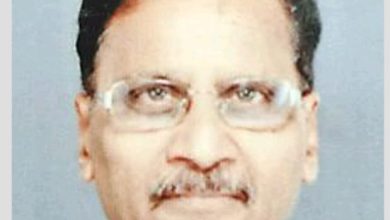Earthquake : Causes and Precautions

Er. Prabhat Kishore
Earthquake i.e. the slightest shaking of the earth causes shivering in the human mind. It does not give them a chance to recover and in the blink of an eye everything is offered to the nature. However, it is an indisputable truth that people do not die due to earthquakes except in a few exceptions; but the death occurs due to unsafe constructions.
Earth’s geographical structure, variations and internal movements are responsible for earthquakes. The whole earth is located on 12 major tectonic plates, namely Indian plate, Eurasian plate, Indo-Australian plate, Philippine plate, Antarctic plate, African plate, Arabian plate, South American plate, North American plate, Caribbean plate and Pacific plate. These plates are floating on the fluid lava beneath them and move slowly (approximately 4-5 cm) from their place every year. When a plate comes near another plate, then the plate moves away from someone. Sometimes, one plate collides with the boundary of another plate and faults are generated; due to which the energy below the earth comes out and earthquake occurs.
The Indian plate extends from the Himalayan Mountains to the Antarctic. It just touches the Pakistan border. It is to the south of the Himalaya while the Eurasian plate (in which countries like China etc. falls) are to the north of the Himalaya. The Indian plate is moving up in the north-east direction with a speed of 4.7 cm every year; whereas the Eurasian plate is moving north at a speed of 2 cm only. In such a situation, there is a possibility of earthquake due to collision of both the plates.
The epicenter of an earthquake is the place just below which the geological energy is released by the movement of the plates. At this place, the vibration of the earthquake is high and the shock is strong. As the range of the vibration goes away, its effect gradually decreases. The intensity of an earthquake depends on whether the seismic frequency is upward or in the range. In case the frequency of vibration is upwards, less areas are affected.
The intensity of an earthquake (measured on the Richter scale) is the intensity of energy released from inside the earth during an earthquake. Earthquakes with a magnitude of less than 5 on the Richter scale are considered mild. However, it also depends on the composition of the area. If the epicenter of the earthquake is on the bank of the river and high buildings are constructed there without anti-seismic technology, then an earthquake of magnitude 5 can also be dangerous. Earthquakes of magnitude 2 or less are difficult to record and are not felt. An earthquake with a magnitude of 5 – 5.9 is considered moderate and earthquakes with a magnitude of more than 6 are considered fatal.
Indian sub-continent has been divided into five zones of earthquake by Bureau of Indian Standards (IS Code 1893-2002); out of which four are currently valid on the basis of studies, as Zone-1 has been merged into Zone-2. Seismic Zone-5 has been considered as the most active i.e. dangerous and Zone-2 is considered as the least active i.e. safe. The intensity is less than 4 magnitudes in Zone-2, 5 in Zone-3, 7 in Zone-4 and more than 8 magnitudes in Zone-5.
Zone-5 covers entire North-East states, parts of Jammu & Kashmir, Himachal Pradesh, Uttarakhand, Rann of Kutch, parts of Bihar, and Andaman & Nicobar. Zone-4 covers parts of Jammu & Kashmir, Ladakh, Himachal Pradesh, Delhi, Uttarakhand, Sikkim, Parts of Indo-Gangetic plains (Northern Punjab, Chandigarh, Western UP, Northern part of West Bengal, Bihar), parts of Gujarat and Maharashtra, and West Rajasthan. Zone-3 includes Kerala, Lakshadweep, parts of Uttar Pradesh, Gujarat, parts of Bengal, Punjab, Rajasthan, Madhya Pradesh, Bihar, Jharkhand, Chhattisgarh, Maharashtra, Andhra Pradesh, Odisha, Tamil Nadu, Karnataka, and Zone-2 covers the rest of the country and a mojor part of South India.
The entire Himalayan range comes under the high intensity zone of earthquakes. In year 1897, Shillong (8.7 Richter scale), in 1905 Kangra (8.0 Richter scale), in 1934 Bihar-Nepal (8.3 Richter scale), and in 1950 Assam-Tibet (8.6 Richter scale) were hit by major earthquakes.
To avoid the wrath of earthquake, the arrangements and preparedness of disaster management should be effective. Actually, most of the damages to the life and property occurs due to unsafe and weak structures. So, there is a dire need to enact laws for building construction on earthquake resistant technology and strictly enforce it all over the country, especially in the plains and hilly areas. It costs approximately 6-7 percent extra amount to make new houses with earthquake resistant design, while about 12-15 percent extra cost is incurred in converting old houses as earthquake resistant.
Efforts have also been made to bring awareness in this direction by the Disaster Management Department of the State Governments. The IS code assigns a Zone Factor (the maximum horizontal acceleration that can be experienced by a structure) to each zone, which is used by the Structural engineers for earthquake resistance design of the structures.
Some basic provisions should be taken care of in the construction of masonry buildings for earthquake protection. Building based on one brick thick walled structure should be up to three storeys only.
Horizontal bands are important earthquake resistant feature. It holds a masonry building as a single unit tying all the walls together and is similar to a belt tied around the box. Lintel Bands as well as Plinth bands are required in every building. Gable bands are essential in buildings with pitched or slopped roofs. A roof band is not necessary in a flat RC roof building, because the roof slab itself plays the role of a band. The Indian Standards IS : 4326-1993 and IS : 13828-1993 provide sizes & details of the bands.
Earthquake is a natural phenomenon; as a result, it cannot be prevented. But the use of anti-seismic techniques in the construction of buildings and other infrastructural structures, can restrict the loss of life as well as property to a minimum level.
(The author is a technocrat & academician. He holds Master in Engineering from M.N. Regional Engineering College, Allahabad/Prayagraj)






